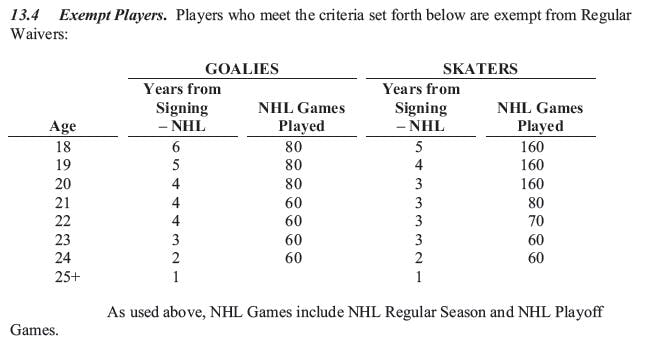Fun With the CBA! On Philip Holm Being Old and Waiver Free

By Jeremy Davis
6 years agoWith free agency in the rear view mirror and the time marching on into the summer, the attention of Canucks fans turns to formulating potential opening night rosters. I took a crack at that myself the other day, at least with the forwards. One of the factors that I took into account was waiver eligibility. While the Canucks have shown in the past that they aren’t afraid to waive players if they are outplayed at training camp (Frank Corrado, Linden Vey, Emerson Etem come to mind – two of which were lost to other teams), the preference would usually be to not risk losing players for nothing.
This brings us to defenceman Philip Holm, who the Canucks signed as a free agent after his role with Sweden in the World Championships in May. Despite being 25-years old, Holm is in fact waiver exempt for the upcoming season. I’ve seen and heard some folks marvel about this fact, so I thought I’d run through the reasons that this is the case.
Waiver eligibility is determined by a few factors: the age of the player, how long it’s been since they signed their Entry Level Contract, and how many NHL games they played since they signed it. We’ve covered waiver rules on this site numerous times before, so this table from section 13 of the NHL’s Collective Bargaining Agreement shouldn’t be unfamiliar.

Age is determined by a number of different conventions throughout the CBA. In regards to waivers, age is determined by article 13.4, which states that the age of a player for the purposes of waivers is the age they turn in the calendar year of the entry draft preceding the first year of their Entry Level Contract (simple, right?). Holm was born of December 8th, 1991, meaning he turns 26 in the calendar year of the relevant CBA. Therefore, his waiver age is considered to be 26.
That means he fits into the bottom row (age 25+) of the above table, which puts him into a situation that we haven’t encountered before in one of our cap-related articles. Later on in article 13.4, there is a subsection that states the following:
The language of this statement is a little confusing, so I reached to someone in the know to confirm its meaning. The simple explanation is that as soon as a 25-year old or older player that is party to an entry level contract plays in a single professional game, he becomes exempt from waivers for the remainder of the season. That doesn’t mean he needs to play a professional game first mind you, as he is already allowed waivers by virtue of being in the first year of an Entry Level deal. It simply means that, unlike younger age groups, there is no games limit that would end the player’s exemption if crossed.
The CBA was also generous enough to provide an example of a situation just like Holm’s. Replace 2013-14 and 2014-15 with the next two upcoming seasons (2017-18 and 2018-19) and you’ll have a fit. Holm will be exempt from waivers for the entirety of the 2017-18 campaign, and will require waivers beginning in the 2018-19 campaign.

Now that we’ve sorted out the why, we can focus on the benefits of Holm’s waiver exemption. This is a major advantage for the organization, as it allows an extra amount of flexibility not often afforded to players of that age. The Canucks won’t feel any pressure to keep him in the NHL as their won’t be any risking of losing an asset for nothing, and he can be shuttled back and forth between Vancouver and Utica for the entirety of the season. That makes him a prime candidate for injury call ups (especially as a veteran of the pro level), and for general roster housekeeping.
As for what to expect from Holm in his first season in North America, that’ll be something that we’ll dig into at a later date.
Recent articles from Jeremy Davis





